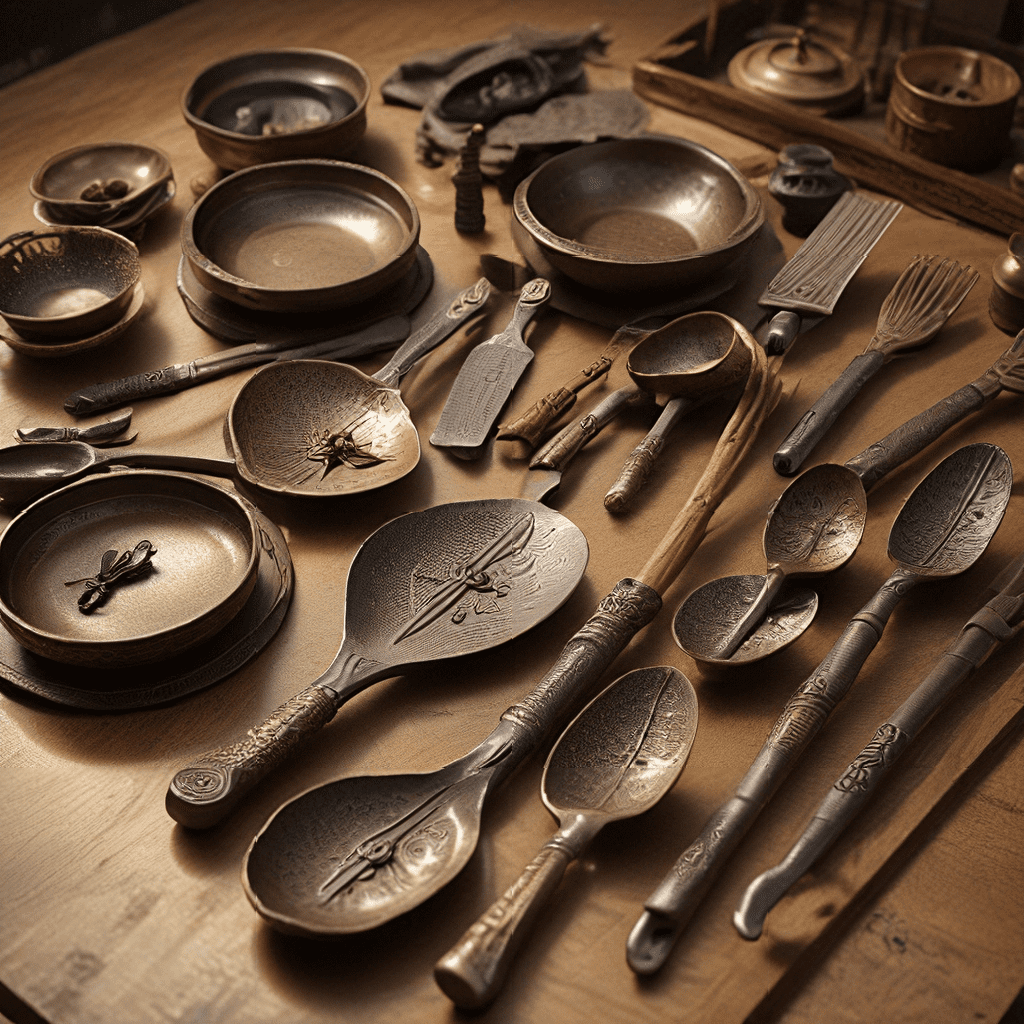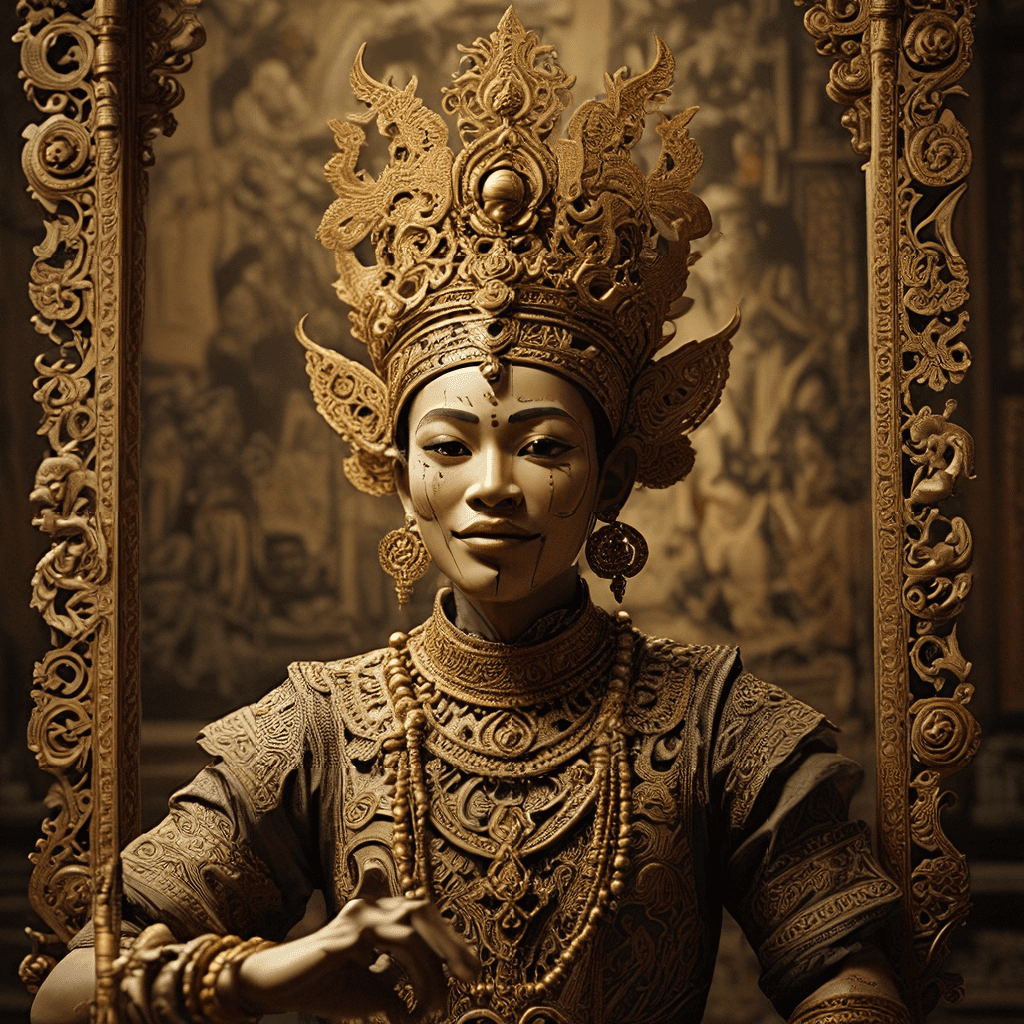Korean Bronze Utensils: Uncovering the Legends of Bangjja
Bangjja in Korean Folklore and Mythology:
In the rich tapestry of Korean folklore, the bangjja, a type of bronze utensil, holds a special place. It's not just a simple eating tool but an object imbued with ancient wisdom, stories, and spiritual meaning. From the hushed whispers of grandmothers to the rhythmic clang of the bangjja in ancient rituals, the stories of these mythical bronze utensils weave a captivating narrative.
The bangjja, often made from a blend of tin, lead, and copper, captivated the imagination of early Koreans. These utensils, with their sleek curves and intricate designs, weren't just functional but symbolized artistry, tradition, and the enduring spirit of the Korean people. The bangjja was more than just a tool; it was a living representation of history, tradition, and even the mythical beginnings of Korean civilization.
In the annals of Korean folklore, the bangjja goes beyond its practical use, becoming a vessel for stories passed down through generations. These stories, often centered around mystical beings, celestial events, and the creation of the world, reflect the deep reverence and awe Koreans held for their bronze utensils. These stories, told and retold over centuries, breathed life into the bangjja, transforming it from a simple object to a symbol of Korean identity and cultural heritage.
The Origins of Bangjja: A Journey Through Time and Legend
The origin of the bangjja is shrouded in a veil of time and legend. While historical records point to the Bronze Age in Korea, the narrative surrounding the bangjja is deeply entwined with myth and folklore. The bangjja wasn't simply created; it was born, a consequence of powerful forces and mystical beings.
One popular myth tells of the bangjja's creation by a celestial blacksmith, a being with supernatural abilities. This celestial blacksmith, guided by the gods, forged the bangjja from the essence of the universe, imbuing it with divine energy and a timeless essence. This mythical origin explains the bangjja's enduring durability, its ability to withstand the test of time, and its unique ability to enhance the flavor of food.
Another legend speaks of a wise shaman who, through deep meditation and connection with the spirits of nature, discovered the secrets of bronzeworking. This shaman, guided by the benevolent spirits, crafted the first bangjja, a gift to the Korean people to improve their lives and connect them with the natural world. This tale underscores the importance of harmony between humans and nature, a core principle deeply embedded in Korean culture.
The Symbolism of Bangjja: More Than Just Utensils
The bangjja was much more than a simple tool used for eating. To the ancient Koreans, the bangjja was a symbol of prosperity, wealth, and good fortune. This symbolism stemmed from the intricate design and craftsmanship of the bangjja, a testament to the skill and artistry of the Korean people.
The bangjja's polished surface reflected light, symbolizing the illumination of wisdom and knowledge. Its shape, rounded and smooth, represented the interconnectedness of all things and the flow of energy in the universe. The intricate patterns, often depicting mythical animals and natural elements, were believed to hold protective powers and ward off evil spirits.
Bangjja and the Korean Concept of Harmony (Heung)
The bangjja was deeply connected to the Korean concept of heung, a state of harmony and balance. This concept, encompassing the interconnectedness of humans, nature, and the universe, permeated every aspect of Korean life.
The bangjja, in its elegant design and harmonious proportions, embodied this concept of heung. The act of using a bangjja to share a meal was believed to create a sense of unity and harmony among the people gathered together. Heung was a force that brought people together, fostering a sense of community and shared purpose.
The Mythological Narrative of Bangjja: Creation and Transformation
The stories surrounding the bangjja are not just entertaining tales; they offer profound insights into the Korean worldview. These narratives often depict a process of creation and transformation, mirroring the evolution of Korean society and culture.
One mythical narrative recounts a time when the bangjja was a simple, unrefined object. But through the intervention of a benevolent spirit, a wise old shaman, or a celestial being, the bangjja was transformed, becoming more beautiful, functional, and imbued with a unique essence. This narrative reflects a belief in the potential for growth, refinement, and positive transformation.
Another myth tells of the bangjja's ability to change according to the user's intentions and actions. A bangjja used with kindness and generosity would become more lustrous, while a bangjja handled with greed or anger would become dull and lose its shine. This story underscores the importance of ethical behavior and the power of intention.
Theories Surrounding the Bangjja’s Origin: Historical and Cultural
While the mythical narratives offer captivating explanations for the bangjja's existence, historical and cultural perspectives provide a more grounded understanding of its origins. Archaeologists have discovered evidence of bronzeworking in the Korean peninsula dating back to the Bronze Age, around 1500 BCE. This suggests that the bangjja emerged during a period of significant technological and cultural advancement.
The discovery of early bangjja artifacts, often found in tombs and burial sites, points to their importance in Korean society. These utensils were not just tools for daily life; they were also prized possessions, signifying status, power, and connection with the ancestors.
The development of bronzeworking techniques, including the mastery of casting, alloying, and ornamentation, was a key factor in the evolution of the bangjja. The intricate designs and patterns found on early bangjja reflect the artistic sophistication of the time. These designs often incorporated geometric motifs, animal forms, and symbols representing nature and the cosmos, reflecting a deep connection to the natural world.
The bangjja's emergence coincided with the development of a distinct Korean identity and culture. These bronze utensils became a tangible expression of this cultural awakening, reflecting the values, beliefs, and aspirations of the early Korean people. The bangjja's enduring presence, even today, testifies to its role in shaping and defining Korean culture.
The Role of Bangjja in Korean Rituals and Ceremonies
The bangjja played a central role in Korean rituals and ceremonies, adding a layer of symbolism and sacredness to these important occasions. From elaborate royal court ceremonies to ancestral rites performed in humble homes, the bangjja was a constant presence, connecting generations and upholding ancient traditions.
In ancestral rites, bangjja were used to offer food and drink to the spirits of ancestors, ensuring their well-being and continued protection. The bangjja's elegant design and intricate patterns were believed to enhance the offerings, demonstrating respect and reverence for the departed.
During royal ceremonies, the bangjja served not only as tools for dining but also as symbols of power and authority. These elaborate bangjja, often adorned with gold and precious stones, reflected the wealth and prestige of the ruling class.
The use of bangjja in rituals and ceremonies reinforced its significance as a cultural icon, connecting it to the very foundations of Korean society. These rituals served as a powerful reminder of the past, the importance of honoring ancestors, and the role of the bangjja in preserving tradition.
Bangjja in Contemporary Korean Art and Culture: A Modern Renaissance
Despite its long and rich history, the bangjja has not been relegated to the museum. Rather, it has experienced a modern renaissance, finding new life in contemporary Korean art and culture. Modern Korean artists, inspired by the bangjja's beauty, craftsmanship, and symbolism, have incorporated it into their work, creating a dialogue between tradition and innovation.
Contemporary artists have reinterpreted the bangjja in various mediums, including sculpture, installation art, and performance art. Some artists have focused on the bangjja's formal qualities, creating abstract sculptures that celebrate its elegant lines and intricate designs. Others have explored the bangjja's symbolic meaning, using it as a metaphor for cultural identity and the enduring spirit of the Korean people.
The bangjja has also found its way into modern Korean design, appearing in everything from furniture and fashion to jewelry and home décor. These contemporary interpretations breathe new life into this ancient tradition, demonstrating the bangjja's timeless appeal and its ability to inspire across generations.
The Legacy of Bangjja: A Timeless Treasure of Korean Heritage
The bangjja, with its rich history, mythology, and enduring presence in Korean culture, stands as a timeless treasure. It embodies the spirit of the Korean people, their love of beauty, their reverence for tradition, and their unwavering connection to their past.
As we look to the future, the bangjja remains a powerful symbol of Korean heritage. It is a reminder of the enduring legacy of a people who have created a unique and vibrant culture, filled with stories, traditions, and art that continues to inspire generations. The bangjja reminds us that the past is never truly gone; it lives on in the objects we create, the stories we tell, and the values we hold dear.
Frequently Asked Questions (FAQ)
Q: What is a Bangjja?
A: A Bangjja is a type of Korean bronze utensil, often used for dining but also holding deep cultural and spiritual significance.
Q: What are Bangjja made of?
A: Typically, Bangjja are made from a blend of tin, lead, and copper.
Q: What is the symbolism behind Bangjja?
A: Bangjja symbolize prosperity, wealth, good fortune, harmony, and the interconnectedness of humans, nature, and the universe.
Q: How are Bangjja used in ceremonies?
A: Bangjja are used in ancestral rites to offer food and drink to ancestors, and in royal ceremonies as symbols of power and authority.
Q: Do Bangjja still have a place in modern Korean culture?
A: Yes, Bangjja has experienced a modern renaissance, inspiring contemporary artists and designers to create new interpretations of this traditional object.



